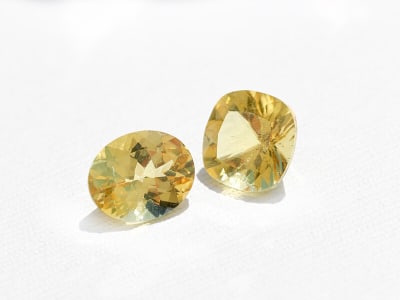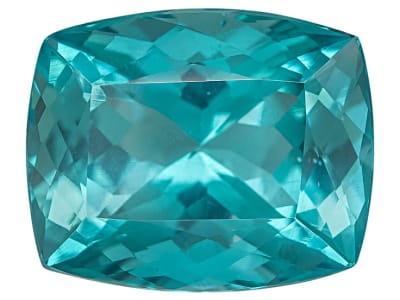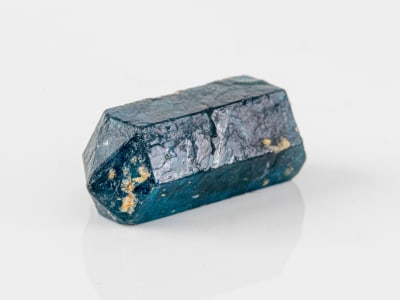Apatite is not a single mineral but a series of minerals that make up the apatite group. The apatite group consists of fluorapatite, chlorapatite, and hydroxylapatite. Most gemstones are a combination of all three members of the series. Stones can be found in shades of blue to green, yellow, brown, pink, and violet. The blue and yellow varieties can be found in sizes over 5 carats. There have been exceptional stones that have exceeded 100 carats. Neon apatite stones can rival the color of Paraíba tourmaline.
General Information
Tolerance:(+0.012/-0.006)
LWUV: Variable
Apatite Colors
-
 Blue
Blue -
 Blue
Blue -
 Brown
Brown -
 Colorless
Colorless -
 Green
Green -
 Green
Green -
 Green
Green -
 Green
Green -
 Green
Green -
 Orange
Orange -
 Pink
Pink -
 Purple
Purple -
 Yellow
Yellow -
 Yellow
Yellow -
 Yellow
Yellow
Apatite Spectra
We acknowledge the significant scientific contributions of John S Harris, FGA to the study of gemstone spectra and with deep appreciation to him, acknowledges the use of his images and related notes about gemstones and their spectra in the educational materials on this website.
Alternate Names
Fluorapatite, Asparagus Stone, Moroxite
Countries of Origin
Tanzania, United Republic Of; Colombia; Myanmar; Afghanistan; Russian Federation; Czechia; Sri Lanka; Madagascar; Kenya; French Polynesia; India; Canada; Mozambique; Pakistan; Morocco; Unknown; China; Namibia; Brazil; Dominican Republic; Mexico; Zimbabwe; Nigeria
History
The Caribbean blues and greens we associate with gem-quality apatite give it cool, easy appeal. Even the yellow shades have undertones that resonate on the cool side of the color wheel. The variety of colors of apatite make it a desirable stone for jewelry. It's a 5 on the Mohs scale and should be treated with care and as a special-occasion stone. Consider it like a fine gown, store it carefully and wear it when the event calls for something truly special. Gem-quality apatite is a unique stone whose various colors are often due to the presence of rare-earth elements or natural irradiation. Apatite cat's-eye is highly sought-after and seldom found. It exhibits chatoyancy that is best displayed in a cabochon cut. Consider created apatite as an alternative to the mother-earth stone. It's hard, very wearable and perfect for those who want to enjoy its enticing colors every day.
Care
Apatite is moderately soft, so be mindful of scratching. Avoid ultrasonic cleaners.

More About Apatite
Some people believe that apatite is an inspirational stone that contributes to learning. There are many qualities attributed to it by those who subscribe to the metaphysical. One of our favorites is the idea that apatite can suppress hunger. We subscribe to believe in the qualities of beauty and color - apatite delivers!
Optical Phenomena
Cat's-Eye
The term cat's eye, or chatoyancy, is used to describe a phenomenal optical property in gemstones, in this case apatite. The effect, when present, appears as a bright, narrow slit similar to the pupils in the eyes of your favorite feline. This phenomenon is caused by parallel fibrous or needle-like inclusions that interfere with the passage of light throughout the crystal, scattering and reflecting light back to the viewer as a thin line. Chatoyancy is the only known phenomenon seen in apatite. The most common colors for cat's eye apatite are bluish green, green and yellow. Brazil and Sri Lanka are the principal sources of chatoyant apatite, although it may also be found in Madagascar and Tanzania.






